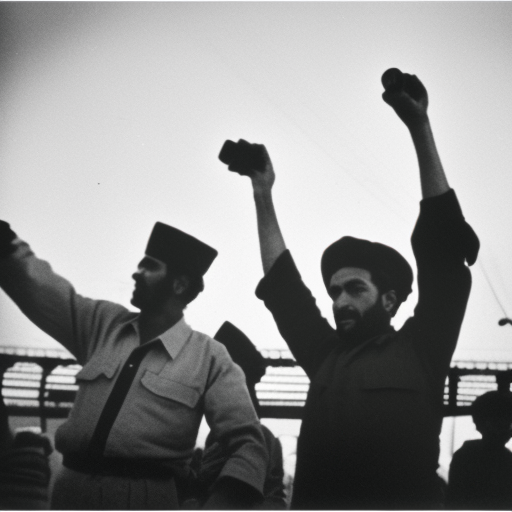The Iranian Revolution: A Turning Point in Iranian History
The Iranian Revolution, also known as the Islamic Revolution, was a major political and social movement that took place in Iran from 1978 to 1979. It resulted in the overthrow of the Pahlavi dynasty and the establishment of an Islamic republic in Iran. The revolution had far-reaching consequences, both domestically and internationally, and continues to shape Iranian politics and society to this day.
Background: The Iranian Revolution was fueled by a combination of factors, including widespread discontent with the rule of Mohammad Reza Shah Pahlavi, known as the Shah. The Shah’s authoritarian regime, supported by the United States, was seen as corrupt, repressive, and out of touch with the needs of the Iranian people. Economic inequality, political repression, and a lack of social freedoms further contributed to the growing discontent.
The Revolution Begins:
The revolution began in January 1978 with a series of protests against the Shah’s regime. The protests quickly escalated into mass demonstrations, with millions of Iranians taking to the streets to demand political reform and an end to the Shah’s rule. The movement was led by a diverse range of groups, including religious leaders, intellectuals, students, and workers.
Role of Ayatollah Khomeini:
One of the key figures in the Iranian Revolution was Ayatollah Ruhollah Khomeini, a charismatic Shia cleric who had been living in exile in France. Khomeini’s fiery speeches and calls for an Islamic republic resonated with many Iranians, and he became the spiritual leader of the revolution. His return to Iran in February 1979 marked a turning point in the revolution, as his presence galvanized the opposition and further undermined the Shah’s authority.
The Fall of the Shah:
Under mounting pressure, the Shah was forced to leave Iran in January 1979, seeking medical treatment abroad. His departure created a power vacuum, and a provisional government was established in his absence. However, the revolution was far from over, as different factions vied for control and the country descended into chaos.
Establishment of the Islamic Republic:
In April 1979, a national referendum was held, and the Iranian people voted overwhelmingly in favor of establishing an Islamic republic. The new government, led by Ayatollah Khomeini, sought to implement Islamic law and create a society based on Islamic principles. The revolution brought about significant changes in Iranian society, including the nationalization of industries, the redistribution of land, and the enforcement of strict religious codes.
International Ramifications:
The Iranian Revolution had profound international ramifications. The United States, which had supported the Shah, was seen as an enemy by the new Iranian government. In November 1979, Iranian militants seized the U.S. embassy in Tehran and held American diplomats hostage for 444 days, further straining relations between the two countries.
The revolution also had a significant impact on the wider Middle East. Iran, under the new Islamic republic, sought to export its revolutionary ideals and support like-minded groups in the region. This led to increased tensions with neighboring countries, particularly Iraq, and contributed to the outbreak of the Iran-Iraq War in 1980.
Legacy:
The Iranian Revolution continues to shape Iranian politics and society. The Islamic republic established in 1979 remains in power, with a Supreme Leader at its helm. The revolution also had a profound impact on the role of religion in Iranian society, with Islamic law becoming the basis for legislation and social norms.
However, the revolution has also been a source of ongoing debate and conflict within Iran. There are those who believe that the revolution has not lived up to its promises of social justice and freedom, while others see it as a necessary step towards reclaiming Iranian identity and independence.
In conclusion, the Iranian Revolution was a pivotal moment in Iranian history. It brought about the downfall of the Shah and the establishment of an Islamic republic, with far-reaching consequences both domestically and internationally. The revolution continues to shape Iranian politics and society, and its legacy is still being debated and contested to this day.












